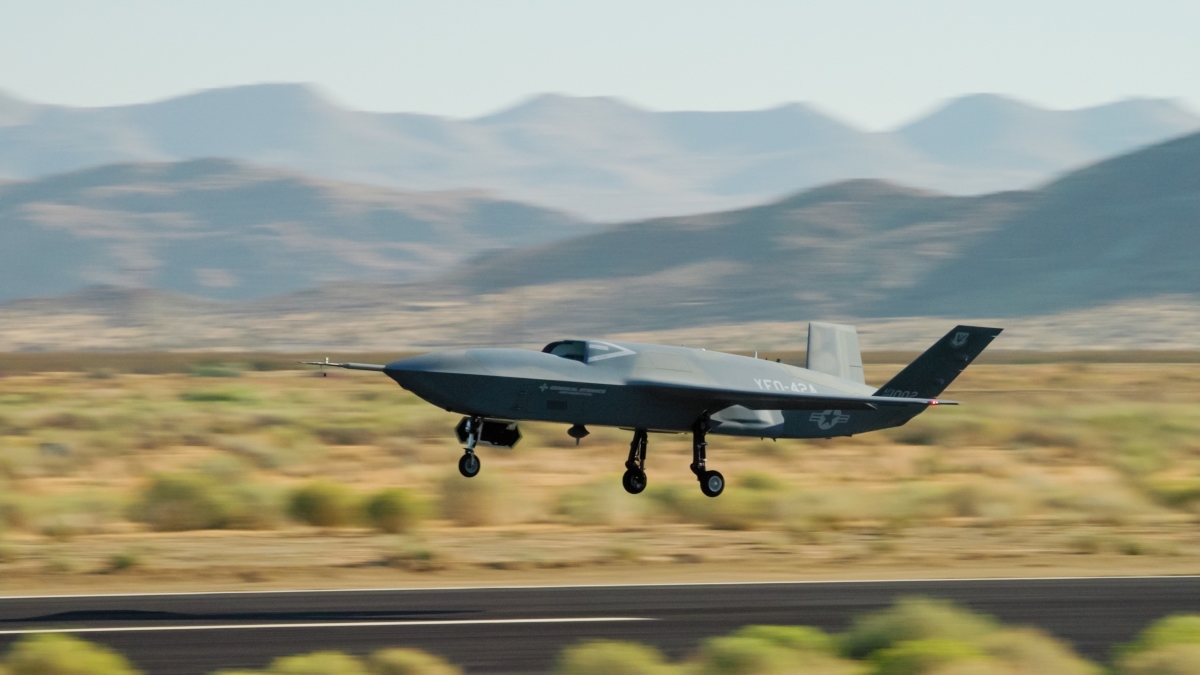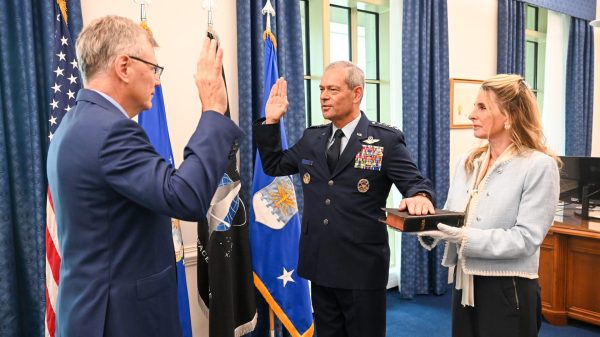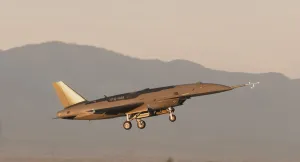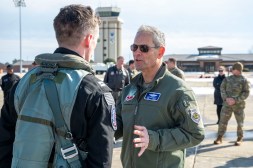Wilsbach: Air Force could stand up independent CCA drone squadrons

The Air Force is considering creating standalone squadrons for its future fleet of robotic wingman drones known as Collaborative Combat Aircraft (CCA), according to the nominee for chief of staff.
“We’re thinking that they’re not going to be embedded in current fighter squadrons, but rather they’re going to be their own squadrons,” Gen. Kenneth Wilsbach said Thursday during his confirmation hearing in front of the Senate Armed Services Committee. “To my knowledge at this point, … I don’t see why the Air Force Reserve, the Air National Guard and the active duty would not be considered.”
One of the Air Force’s most high-profile efforts, the CCA program is part of the Next Generation Air Dominance (NGAD) family of systems. The drones are expected to fly alongside the service’s manned sixth– and fifth-generation aircraft to conduct a range of missions, including offensive strike and intelligence gathering.
In 2024, General Atomics and Anduril received contracts for the first tranche of CCA drones known as Increment 1. After initiating ground testing earlier this year, General Atomics announced in August that it has begun live flight testing for its CCA prototype — the YFQ-42A. Anduril is expected to begin their flight test campaign for its iteration, the YFQ-44A, sometime in mid-October.
The Air Force is taking a rapid and flexible approach with the CCA program and plans to field the aircraft in increments, with each batch offering slightly different capabilities. At least one of the prototypes for Increment 1 will head into production, but the service intends to allow other firms besides General Atomics and Anduril to also compete for the contract.
While officials have previously discussed quantities, capabilities and acquisition strategies for the CCA drones, the Air Force has not shared details about where and how the aircraft will be based once fielded, expected sometime before 2030. By creating separate CCA units instead of mixing them with manned aircraft squadrons, the Air Force could more easily deploy the drones and pair them with different platforms for missions based on their specific capabilities.
The service is standing up a CCA Aircraft Readiness Unit (ARU) at California’s Beale Air Force Base to ensure the drones maintain a “fly-ready status” and can be fielded at a moment’s notice.
Wilsbach — who was tapped by President Donald Trump to become the next Air Force chief of staff in September — told lawmakers that the CCA program “is currently performing well, meeting all cost, schedule, and performance criteria.” The service expects to make a final production decision for Increment 1 of the program in fiscal 2026.






